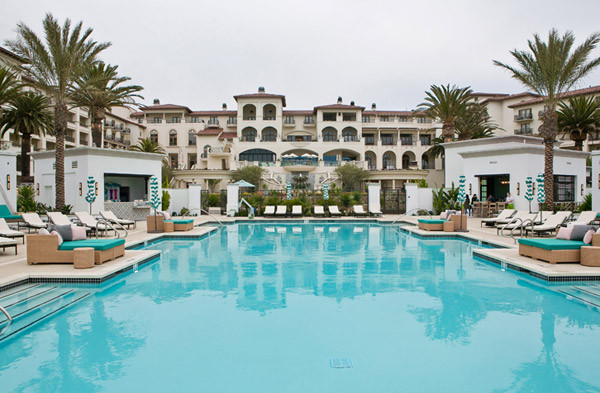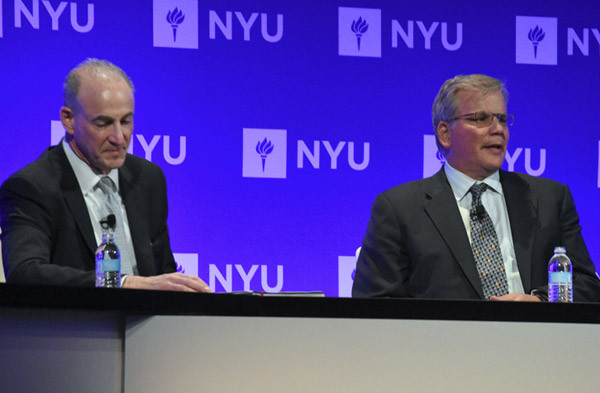✕

Column: industry Tag: KSL Capital Partners,Monarch Beach Resort,Monarch Beach Published: 2017-06-28 17:13 Source: Author:

The Monarch Beach Resort in Dana Point, California, was purchased by KSL Capital Partners in 2014. (Photo: Monarch Beach Resort)
NEW YORK—KSL Capital Partners had long coveted the property that is now Monarch Beach Resort before finally acquiring it in 2014.
The property is somewhat infamous in the hotel industry as the site of a weeklong retreat for AIG employees days after that company received an $85-billion government bailout to stay afloat, a move that garnered considerable political scorn and kick-started widespread anti-corporate travel sentiment referred to as the “AIG effect.”
Speaking at the NYU International Hospitality Industry Investment Conference’s “Anatomy of a transaction” panel, principal Bernard Siegel said the company could see how the property had been the victim of some poor fortune but still held great promise.
“We mentioned the AIG effect, but it’s a very special location,” he said. “They don’t make many of these. They don’t make beachfront locations.”
Siegel said there are “real barriers to entry” for coastal locations like this one in Dana Point, California, due to regulatory issues in the state.
“Going forward, we see virtually (no new supply) in this category, not just because of the type of ground it’s located on—170 acres on the ocean in Orange County in Southern California—but because of high-density land uses and real jurisdictional hurdles to add new rooms,” he said.
Siegel said there are several other things that made the 850,000-square-foot, 400-room resort attractive in addition to low supply.
“It’s a very highly sought-after marketplace location within the submarket. The building quality is exceptional,” he said.
Siegel said many people had identified the resort as an attractive investment, meaning his company had to be aggressive in both its pursuit and pricing. That meant taking a leap of faith, even though KSL sought the property for “at least a decade” before the successful purchase.
“We entered this asset at a price that was a sub-5 cap and also a 17-times multiple, so … we had to be convinced we could add value by growing (earnings before interest, taxes, depreciation and amortization) and buying down that multiple,” he said.
The reinvention of the Monarch Beach
Due to its past performance and the potential for greater returns, Siegel said the company made the “unusual” decision to invest $35 million into the Monarch Beach Resort even though it was already “very, very high quality.”
He said a lot of that investment was geared toward better connecting the property to the beach and the surrounding area.
“Our simple objective—easy to say, harder to do—was to create a coastal lifestyle experience versus overly formal,” he said. “If you walked into the resort prior to the renovation, you could be in a museum in New York. You wouldn’t see the ocean. The outdoors was part of the guest experience in many parts of the interior of the asset. Even a lot of the events space on the outside of the hotel were not connected to the ocean. So we made a major effort trying to change that.”
In addition to the construction work, Siegel said the property needed a general change in attitude to better connect guests to the experiences available nearby. He said this became abundantly clear when his family visited the resort as leisure guests six months after the purchase and a tuxedo-clad butler showed up at his door asking if he could press Siegel’s clothes or shine his shoes.
“I thought, ‘We don’t have any leather shoes this trip, and T-shirts shouldn’t be pressed,’” he said. “But I asked if he could help me with surfing lessons, mountain bike trails and sushi recommendations in Laguna, and he was as stymied as I was. But that should be anticipated. We’ve heard a lot about brand relevancy, but we come at it as customer relevancy.”
Prior to the acquisition, the property was branded as the St. Regis Monarch Beach. KSL decided to take the property independent. Siegel said converting the property to another prominent luxury brand was an option as many were interested in the property and location, but ultimately the company felt comfortable striking out on its own.
“We wanted to investigate (branding), and we took it very seriously,” he said. “At the end of the day, it’s a market we’ve operated in with our affiliate partner KSL Resorts and have done extremely well relative to branded operations.”

Arthur Adler (left), of JLL, and Bernard Siegel, of KSL Capital Partners, speak at the 2017 NYU International Hospitality Industry Investment Conference. (Photo: Bryan Wroten)
Siegel said one of the most positive indicators for the cycle and the health of the property is the fact that many of the AIG-type customers have returned to the property.
In terms of an exit, he noted KSL is still in “the middle part of the business plan” with Monarch Beach, but noted the company’s “underwritten returns were a bit more aggressive than what we normally target because of the quality of the asset.”
Comments on recent acquisitions
Siegel also commented on some more recent moves his company has made, including the purchases of Outrigger Hotels and Resorts?and Apple Leisure Group. He said his company is willing to bet big on the resort space going forward.
On the Outrigger?deal, he said he liked both the structure and geography of the company.
“It’s a combination of a large operating platform with significant advantages in Hawaii and Asia/Pacific,” Siegel said.
He said Outrigger’s growth in Asia holds promise.
“Not only is that a popular and growing part of the world for consumers but also investors, so those assets are seeing significant operational gains,” he said.
With Apple Leisure, Siegel said he sees that company as “the market leader in all-inclusive vacations.”
“They have an extensive collection of all-inclusive resorts that are managed; there are no owned assets in this transaction,” he said.
The broad nature of the business gives it multiple opportunities for growth, he said.
“We are making aggressive investments and bets, if you will, late cycle, but we feel like we have more value-creation levers than some risk-averse companies, or at least we hope so,” Siegel said.
Previous:Mantra Group Consolidates Portfolio Into New Masterbrand - Mantra Hotels
Next:Mangalis ramps up hotel development in Africa
Hot key words
Hot Products
Popular Vendors